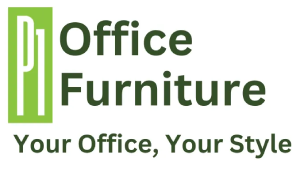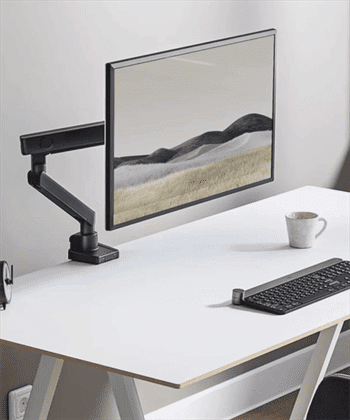Desks are essential pieces of furniture in both home and office environments. They come in a variety of styles and designs, each tailored to meet specific needs and preferences. In this article, we’ll explore the different types of desks, focusing on their functionalities, design elements, and how they can best serve your workspace. We will also compare writing desks versus computer desks and delve into various office desk styles.
Types of Desks: An Overview
When selecting a desk, it’s crucial to consider its purpose and how it fits into your workspace. Here are some of the most common desk types you’ll encounter:

- Writing Desks
- Computer Desks
- Executive Desks
- Corner Desks
- Standing Desks
- Credenza Desks
- Roll-Top Desks
- Floating Desks
Writing Desks vs. Computer Desks

Writing desks are typically designed with a simple, flat surface to accommodate writing or paperwork. They often come with minimal storage, focusing on providing ample surface area for tasks that don’t require a computer. These desks are ideal for those who engage primarily in writing, drawing, or similar activities.
On the other hand, computer desks are specifically designed to house a computer and its peripherals. They usually feature built-in cable management, keyboard trays, and additional compartments for storing hardware and accessories. Computer desks can vary significantly in size and complexity, accommodating everything from a simple laptop setup to a full multi-monitor workstation.
Exploring Office Desk Styles

The aesthetics and functionality of your desk can significantly impact your productivity and comfort. Here are some popular office desk styles:
- Executive Desks: These large, often ornate desks are designed for top executives. They offer ample workspace, numerous drawers, and a commanding presence that fits well in a corner office or a home study.
- Corner Desks: Perfect for optimizing space, corner desks fit snugly into the corners of a room. They provide plenty of surface area and can be configured to include shelves and additional storage options.
- Standing Desks: As more people become aware of the health risks associated with prolonged sitting, standing desks have gained popularity. They allow users to alternate between sitting and standing positions, promoting better posture and overall health.
- Credenza Desks: Combining the functionality of a desk with the storage capacity of a credenza, these desks are perfect for those who need to keep a lot of items organized. They often feature multiple drawers and cabinets.
- Roll-Top Desks: These classic desks feature a rolling cover that can be closed to conceal the workspace. They offer a vintage appeal and are suitable for those who want to keep their work area tidy and out of sight when not in use.
- Floating Desks: Attached directly to the wall, floating desks save floor space and create a modern, minimalist look. They are ideal for small apartments or rooms where space is at a premium.
Choosing the Right Desk for Your Needs
When selecting the perfect desk, consider the following factors:

- Functionality: Determine what you need the desk for. If you’re primarily writing, a writing desk might suffice. If you’re working with a computer, opt for a computer desk.
- Space: Measure your available space to ensure the desk fits comfortably without overcrowding the room.
- Storage: Consider how much storage you need. Desks with multiple drawers and shelves are beneficial for those with many items to organize.
- Aesthetics: Choose a desk that complements your office decor and personal style.
Conclusion
Understanding the different types of desks and their specific functionalities can help you make an informed decision that enhances your productivity and comfort. Whether you need a simple writing desk, a tech-friendly computer desk, or an elegant executive desk, there’s a perfect option out there for you. By considering your unique needs and preferences, you can find a desk that not only fits your workspace but also boosts your efficiency and satisfaction.
Frequently Asked Questions (FAQs)
Q.1. What is the difference between a writing desk and a computer desk?
A writing desk is typically designed with a simple, flat surface ideal for writing or paperwork, with minimal storage options. It’s meant for tasks that don’t require a computer. On the other hand, a computer desk is specifically designed to accommodate a computer and its peripherals. It often features cable management systems, keyboard trays, and compartments for storing computer accessories, making it suitable for digital workspaces.
Q.2. What type of desk is best for a small home office?
For a small home office, a corner desk or a floating desk is often the best choice. Corner desks maximize space by fitting into the corner of a room, providing ample surface area without taking up too much floor space. Floating desks, which are mounted to the wall, save floor space and create a modern, minimalist look, making them ideal for compact areas.
Q.3. How do standing desks benefit your health?
Standing desks offer significant health benefits by allowing users to alternate between sitting and standing positions throughout the day. This can help reduce the risks associated with prolonged sitting, such as back pain, poor posture, and increased risk of cardiovascular diseases. Standing desks promote better posture, improve circulation, and can lead to increased energy levels and productivity.
Q.4. What are the advantages of an executive desk?
Executive desks are large and often feature a sophisticated design, making them a centerpiece in any office. They provide ample workspace and come with multiple drawers and storage options, which are ideal for organizing documents and office supplies. The commanding presence of an executive desk can also convey professionalism and authority, making it suitable for high-level executives and home studies.
Q.5. Can I use a writing desk as a computer desk?
While it is possible to use a writing desk as a computer desk, it may not be the most efficient choice. Writing desks typically lack the features designed to accommodate computer equipment, such as built-in cable management, keyboard trays, and sufficient storage for peripherals. However, if your computing needs are minimal and you prefer a simpler setup, a writing desk can still serve as a functional and stylish workstation.

 Workstations
Workstations Monitor Arms
Monitor Arms Dividers
Dividers Storage
Storage Seatings
Seatings Accessories
Accessories


